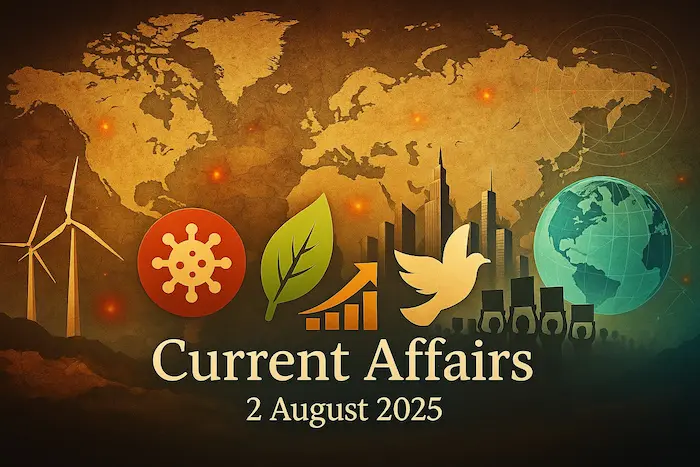1. What are Skill Impact Bonds (SIBs)? – Economy

Why in News?
Skill Impact Bonds (SIBs) have recently gained attention due to their continued promotion by the Ministry of Skill Development and Entrepreneurship (MSDE) as an innovative, performance-linked model for employment-focused skilling.
Background & Context
- The Skill Impact Bond (SIB) is India’s first Development Impact Bond (DIB) in the skilling sector.
- Launched in November 2021, it is a results-based financing tool designed to align investments with measurable employment outcomes, rather than just input-based funding.
- It targets the training and placement of 50,000 youth over four years, with a significant 62% focus on women’s participation.
Key Features and Stakeholders
Lead Agency:
- National Skill Development Corporation (NSDC) under the Ministry of Skill Development and Entrepreneurship (MSDE).
Key Collaborators:
- British Asian Trust (technical support)
- HSBC India, Michael & Susan Dell Foundation (funding partners)
Operational Structure:
| Role | Function |
|---|---|
| Risk Investors | Provide upfront capital to training providers |
| Training Providers | Deliver job-relevant skills training |
| Outcome Funders | Repay investors only if outcomes (like job placement) are met |
| Independent Evaluators | Measure outcomes using CATI surveys and document verification |
Outcome Metrics:
- Success is not based on enrollment alone but on:
- Certification
- Job Placement
- Three-month job retention
Eligibility Criteria:
- Age: 18 to 40 years
- Education: Up to undergraduate level
- Income:
- Personal income below ₹15,000/month
- Or household income below ₹25,000/month
- Employment Status: Unemployed or underemployed
Sectors Covered:
- Retail, Healthcare, Apparel, Logistics,
- IT & ITeS, Banking, Financial Services, Insurance
Women-Centric Focus:
- Ensures 62% participation of women
- Aims to reduce gender disparity in formal employment and economic empowerment
Exam Connect – Possible Questions
Prelims
- Which of the following statements about Skill Impact Bonds (SIBs) is/are correct?
1.They are financed by the government through budgetary allocations.
2. Investors are repaid only if measurable outcomes like job placement are achieved.
3.They focus only on enrollment of candidates for skilling.
Options:
A. 2 only
B. 1 and 3 only
C. 2 and 3 only
D. 1, 2 and 3
Answer: A. 2 only
2. In the context of Skill Impact Bonds, which of the following sectors is not covered under the initiative?
A. Banking and Financial Services
B. Renewable Energy
C. Healthcare
D. Logistics
Answer: B. Renewable Energy
3. The term “Development Impact Bond” primarily refers to:
A. Government borrowing for infrastructure projects
B. Private investors funding development programs with returns linked to outcomes
C. Corporate bonds with ESG ratings
D. Bonds issued by multilateral development banks
Answer: B. Private investors funding development programs with returns linked to outcomes
Mains
- What are Skill Impact Bonds (SIBs)? Discuss how they differ from traditional government-funded skilling schemes.
- How can outcome-based financing models like Skill Impact Bonds enhance employment outcomes among youth in India? Illustrate with examples.
- Evaluate the role of Skill Impact Bonds in promoting gender inclusion in the Indian workforce.
2. Transforming Early Childhood Care and Education (ECCE) – Governance
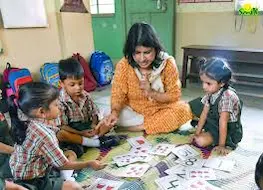
Why in News?
The National Education Policy (NEP) 2020 marks a transformative shift in India’s education landscape by recognizing Early Childhood Care and Education (ECCE) as a critical component of foundational learning. The policy seeks to universalize ECCE by 2030 and integrate preschool education within the formal schooling system, particularly through government schools.
Background & Context
- Historically, children aged 3–6 years in India were cared for primarily through Anganwadi Centres, which prioritized nutrition and health over education.
- Formal schooling systems largely excluded this age group, creating gaps in foundational learning, particularly for children from marginalized communities.
- NEP 2020 seeks to bridge this gap by integrating preschool classes (Balavatikas) into the public school system and ensuring equitable access to quality early education.
Key Features of NEP 2020’s ECCE Reform
Institutional Integration:
- Preschool classes (Balavatika) to be introduced in government schools, offering structured learning for children aged 3–6.
- Target: Universal ECCE by 2030.
Focus on Equity:
- Designed to reduce inequality by giving children from lower socio-economic backgrounds access to formal, quality preschool education.
Infrastructure Expansion:
- Moving beyond 14 lakh Anganwadi centres, which often lack adequate educational resources.
- Developing new ECCE classrooms and upgrading infrastructure in existing schools.
Teacher Recruitment & Training:
- Emphasis on skilled ECCE educators, trained in child pedagogy and multidisciplinary approaches.
Changing Trends and Institutional Roles
| Aspect | Description |
|---|---|
| Migration Trend | Increasing parental preference for preschool education in government schools due to better perceived quality. |
| Anganwadi Reorientation | Focus to shift toward 0–3 year age group, including home-based care, parental guidance, and nutrition for mothers. |
| Inter-Sectoral Collaboration | Requires synergy among Education, Health, and Nutrition Ministries to ensure holistic ECCE implementation. |
Challenges in Implementation
- Inadequate infrastructure and learning materials.
- Shortage of trained ECCE educators.
- Need for policy coordination across departments.
- Resistance from traditional Anganwadi frameworks.
- Ensuring continuity and transition from preschool to primary grades.
Exam Connect – Possible Questions
Prelims
- Which of the following statements about Early Childhood Care and Education (ECCE) under NEP 2020 is/are correct?
1. ECCE is to be universalized by 2025.
2. The NEP promotes integrating preschool education into government schools.
3. Anganwadis will be reoriented to focus more on the 0–3 age group.
Options:
A. 1 and 2 only
B. 2 and 3 only
C. 1 and 3 only
D. All of the above
Answer: B. 2 and 3 only
2. Under NEP 2020, the term “Balavatika” refers to:
A. A scheme for adolescent girls
B. A new initiative for maternal care
C. Preschool classes for children aged 3–6
D. An adult literacy program
Answer: C. Preschool classes for children aged 3–6
3. Which of the following is a major challenge in implementing ECCE under NEP 2020?
A. High dropout rate in secondary schools
B. Lack of trained early childhood educators
C. Teacher absenteeism in higher education
D. Privatization of engineering colleges
Answer: B. Lack of trained early childhood educators
Mains
- Discuss the significance of Early Childhood Care and Education (ECCE) in the context of NEP 2020. What are the key challenges in implementing this vision across India?
- Evaluate the role of Anganwadi centres in the evolving landscape of ECCE. How can their function be redefined in line with NEP 2020?
- How does NEP 2020 address the equity gap in early education? Suggest policy measures to strengthen ECCE delivery in rural areas.
3. Digital Payments Index (DPI) – Economy
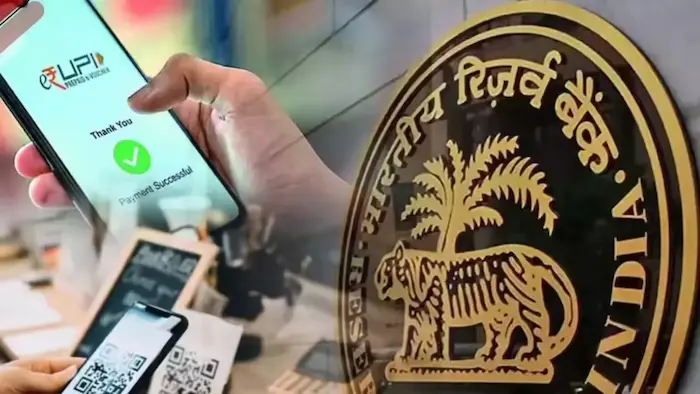
Why in News?
According to the Reserve Bank of India (RBI), digital payments in India saw a 12.6% year-on-year growth as of March 31, 2024, as measured by the Digital Payments Index (DPI). This underscores India’s continued push toward a cashless economy.
Background & Context
- The Digital Payments Index (DPI) was launched by the RBI in January 2021.
- It serves as a composite measure of the extent of digitization of payments across India.
- The base year is March 2018, when the DPI was set at 100.
Key Features of the Digital Payments Index
Frequency of Release:
- Released semi-annually (twice a year)
- With a 4-month lag (i.e., March data is released in July)
Objective:
- To track and quantify the adoption and growth of digital payment systems in India over time.
Index Growth:
- From 100 in March 2018 to 493.22 in March 2025
- Represents nearly a fivefold increase, indicating robust expansion of digital payment infrastructure and usage.
Key Parameters of DPI:
| Parameter | Weightage |
|---|---|
| Payment Enablers | 25% |
| Payment Infrastructure – Demand Side | 10% |
| Payment Infrastructure – Supply Side | 15% |
| Payment Performance | 45% |
| Consumer Centricity | 5% |
- The largest weight is given to payment performance, highlighting the importance of actual usage and transaction volumes.
- The enabler and infrastructure components assess the spread of digital platforms (e.g., UPI, mobile wallets, bank accounts, internet/mobile access).
- Consumer centricity evaluates factors like grievance redressal, awareness, and user satisfaction.
Drivers of DPI Growth:
- UPI (Unified Payments Interface) – Over 10 billion transactions monthly.
- QR code acceptance – Rapid growth among merchants.
- Mobile wallets & banking apps – Increased financial literacy and smartphone penetration.
- Government initiatives like Digital India, PM Jan Dhan Yojana, and financial inclusion programs.
Exam Connect – Possible Questions
Prelims
- Which of the following statements about the Digital Payments Index (DPI) is/are correct?
1.The index is released monthly by the Reserve Bank of India.
2.Payment Performance carries the highest weight in the index.
3.The base year of the DPI is March 2018.
Options:
A. 1 and 2 only
B. 2 and 3 only
C. 1 and 3 only
D. All of the above
Answer: B. 2 and 3 only
2. Which of the following parameters carries the highest weight in the Digital Payments Index?
A. Payment Enablers
B. Payment Infrastructure – Supply Side
C. Payment Performance
D. Consumer Centricity
Answer: C. Payment Performance
3. Which of the following is not a component of the Digital Payments Index?
A. Consumer Centricity
B. Payment Performance
C. Direct Tax Collection
D. Payment Infrastructure
Answer: C. Direct Tax Collection
Mains
- What is the Digital Payments Index (DPI)? Discuss its components and significance in promoting digital financial inclusion in India.
- Analyze the role of digital payments in transforming the Indian economy. What are the challenges in ensuring equitable digital payment access in rural areas?
- How can states like Himachal Pradesh leverage digital payment trends to promote inclusive economic development?
4. Why the World Needs Better Green Technologies – Environment
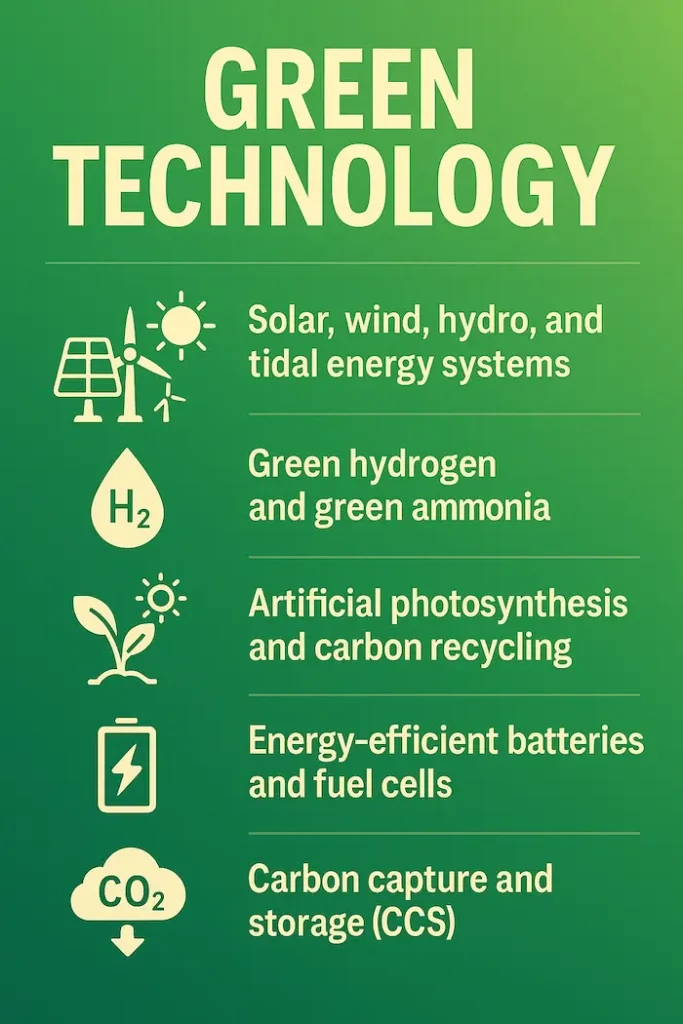
Why in News?
As countries intensify efforts to meet climate targets and accelerate the transition to clean energy, concerns are growing over the limitations of existing green technologies, especially silicon-based solar panels and green hydrogen production methods. This has sparked a global push for more efficient, scalable, and sustainable alternatives.
Background & Context
- Clean technologies like solar panels and green hydrogen are central to India’s and the world’s energy transition strategies.
- However, current technologies often carry hidden inefficiencies or environmental trade-offs.
- This calls for rethinking innovation pathways to align economic growth with environmental sustainability and energy self-reliance.
Key Issues with Existing Technologies
1. Silicon Solar Panels:
| Aspect | Issue |
|---|---|
| Low Efficiency | Only 15–18% of solar energy converted to electricity |
| High Land Requirement | Due to low efficiency, large land areas are needed, affecting agriculture and biodiversity |
| Environmental Footprint | Energy-intensive manufacturing involving toxic chemicals, undermining sustainability benefits |
2. Green Hydrogen via Electrolysis:
| Aspect | Issue |
|---|---|
| Net Energy Loss | Electrolysis consumes more energy than the hydrogen it produces, making it economically inefficient |
| Storage & Transport Issues | Hydrogen is low in density, requiring high-pressure or cryogenic tanks, which are costly and hazardous |
| Example – Ladakh Projects | Pilot projects in Ladakh have demonstrated a low net energy gain, highlighting the practical challenges in difficult terrains. |
Emerging Technologies and Alternatives
Artificial Photosynthesis (APS):
- Mimics natural photosynthesis to convert sunlight, water, and CO₂ directly into fuels (e.g., green hydrogen).
- Reduces energy losses by bypassing intermediary steps like electrolysis.
- Holds potential as a next-gen green technology with better efficiency.
Renewable Fuels of Non-Biological Origin (RFNBOs):
- Include synthetic fuels created using renewable electricity and non-bio feedstocks.
- Can help reduce fossil fuel imports and enhance India’s energy security.
- Support cleaner industrial fuel applications (e.g., aviation, heavy transport, steelmaking).
Exam Connect – Possible Questions
Prelims
- Which of the following technologies is/are being explored as alternatives to traditional green energy methods?
1.Artificial Photosynthesis
2. Renewable Fuels of Non-Biological Origin
3. Carbon-Intensive Thermal Power
Options:
A. 1 and 2 only
B. 2 and 3 only
C. 1 and 3 only
D. All of the above
Answer: A. 1 and 2 only
2. What is a key challenge associated with green hydrogen production via electrolysis?
A. High land requirement
B. Requires fossil fuel as input
C. Low energy return on investment
D. Limited availability of wind resources
Answer: C. Low energy return on investment
3. Artificial Photosynthesis (APS) is primarily designed to:
A. Replace coal-based thermal plants
B. Mimic the process of converting solar energy and CO₂ into fuels
C. Enhance soil carbon absorption
D. Increase biodiversity in deserts
Answer: B. Mimic the process of converting solar energy and CO₂ into fuels
Mains
- Critically analyze the limitations of current green technologies like silicon-based solar panels and electrolysis-based green hydrogen. How can emerging technologies like Artificial Photosynthesis and RFNBOs address these challenges?
- Discuss the role of next-generation renewable technologies in ensuring sustainable and equitable energy transitions in India.
- Why is it important for India to invest in alternative green energy solutions beyond current mainstream technologies? Suggest a roadmap to promote such innovations.
5. Supreme Court Reserves Verdict on Age Cap for Surrogacy – Polity

Why in News?
The Supreme Court of India has reserved its verdict on a series of petitions challenging the age restrictions imposed by the Surrogacy (Regulation) Act, 2021 and the Assisted Reproductive Technology (ART) (Regulation) Act, 2021. The matter holds importance for couples who had initiated the surrogacy process before the laws came into effect.
Background & Context
- Both laws came into force in January 2022 to regulate fertility treatments and prevent misuse of reproductive technologies.
- The petitioners argue that the age limits set by these laws have disqualified them retroactively, disrupting their treatment mid-process.
- The case highlights the conflict between individual reproductive rights and legislative restrictions aimed at protecting medical ethics and safety.
Legal Framework: Key Provisions of Surrogacy & ART Acts
| Provision | Surrogacy (Regulation) Act, 2021 | ART (Regulation) Act, 2021 |
|---|---|---|
| Purpose | Prohibits commercial surrogacy, permits altruistic surrogacy | Regulates fertility clinics and ART procedures |
| Age Criteria for Intended Parents | Women: 23–50 years Men: 26–55 years | Same as Surrogacy Act |
| Single Women Eligibility | Only widows or divorcees aged 35–45 years | Not explicitly defined |
| Medical Certificate Requirement | Must certify inability to conceive | Similar certification required for ART procedures |
Petitioners’ Arguments
- The age limits have been applied retrospectively, affecting those who had already begun ART or surrogacy procedures before 2022.
- Alleged violation of:
- Article 14 – Right to Equality: Age restrictions are arbitrary and discriminatory.
- Article 21 – Right to Life & Personal Liberty: Includes the right to reproductive autonomy.
- Demand for a grandfather clause to protect ongoing cases.
Government’s Stand
- Defends the age limits as medically sound, citing:
- Health risks to older parents
- Concerns over child welfare
- Emphasizes the need for regulation in a rapidly commercializing fertility industry
Supreme Court’s Observations
- The Court has questioned the rationale of imposing strict age caps.
- Highlighted the importance of compassionate interpretation of laws related to parenthood and reproductive choices.
- The pending verdict may redefine the balance between regulatory intent and personal reproductive rights.
Exam Connect – Possible Questions
Prelims
- Under the Surrogacy (Regulation) Act, 2021, which of the following categories of women are eligible to opt for surrogacy as single mothers?
A. Any unmarried woman above 35 years
B. Married woman with no child
C. Widow or divorcee aged 35 to 45 years
D. Woman above 23 years regardless of marital status
Answer: C. Widow or divorcee aged 35 to 45 years
2. Which of the following is/are true regarding the Surrogacy (Regulation) Act, 2021?
1. Commercial surrogacy is permitted under strict medical supervision.
2.The Act allows altruistic surrogacy only.
3. Intended couples must submit a medical certificate of infertility.
Options:
A. 1 only
B. 2 and 3 only
C. 1 and 3 only
D. All of the above
Answer: B. 2 and 3 only
3. Article 21 of the Constitution has been interpreted by the Supreme Court to include:
A. Right to property
B. Right to reproductive autonomy
C. Right to freedom of speech
D. Right to vote
Answer: B. Right to reproductive autonomy
Mains
- Discuss the constitutional implications of imposing age-based restrictions on surrogacy and ART procedures. Should reproductive autonomy be subject to such limits?
- How do the Surrogacy (Regulation) Act, 2021 and ART (Regulation) Act, 2021 reflect the balance between state regulation and personal liberty? Evaluate in light of Article 14 and Article 21.
- Do retrospective provisions in social legislation violate the principles of natural justice? Illustrate with reference to the ongoing case on surrogacy age caps.
6. Supreme Court Raises Concerns on Electoral Roll Revision in Bihar – Polity
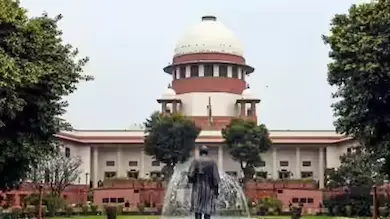
Why in News?
The Supreme Court of India has questioned the legality and democratic implications of the Special Intensive Revision (SIR) of electoral rolls initiated by the Election Commission of India (ECI) in Bihar. Though described by the ECI as a routine update, the policy has raised fears of mass disenfranchisement, especially among marginalized communities.
Background & Context
- India’s electoral framework is built on the principle of universal adult suffrage, where every citizen above 18 is presumed eligible to vote unless proven otherwise.
- The SIR process in Bihar reverses this principle, requiring voters to prove their citizenship status through documentary evidence.
- This shift is viewed as a departure from the inclusive foundations of Indian democracy.
Key Issues with the SIR Process
| Issue | Description |
|---|---|
| Documentation Burden | Voters are asked to provide birth certificates, passports, or other rare documents within a one-month deadline. |
| Marginalized Impact | Over 6.5 million voters—mostly from poor, rural, SC/ST, and minority communities—are at risk of disenfranchisement. |
| From Inclusion to Exclusion | The policy shifts the presumption from “you are a voter unless proven otherwise” to “you are not a voter unless you prove otherwise”. |
| Constitutional Concerns | Raises questions under: Article 326 – Right to Vote Article 14 – Right to Equality Article 21 – Right to Life and Dignity | |
Historical Parallels & Implications
- The situation draws comparisons to the Jim Crow laws in the U.S., which used procedural barriers to suppress Black voters.
- Similar bureaucratic hurdles could institutionalize exclusion and weaken the democratic character of the Indian state.
Judicial Developments
- The Supreme Court has taken cognizance of the issue, seeking responses from the ECI.
- The judiciary has emphasized that electoral revisions must uphold democratic values and constitutional morality.
- However, civil society and experts call for stronger intervention to prevent systemic disenfranchisement.
What Makes This Controversial?
| Factor | Description |
|---|---|
| No Grandfather Clause | Individuals already on the rolls are being re-verified without transitional safeguards. |
| Risk of Politicization | Critics argue the process could be misused for voter suppression or social engineering. |
| Lack of Transparency | The ECI has provided no detailed rationale or data for the change, raising questions on accountability. |
Exam Connect – Possible Questions
Prelims
- Which of the following Articles of the Indian Constitution is directly linked to the Right to Vote in elections?
A. Article 14
B. Article 19
C. Article 21
D. Article 326
Answer: D. Article 326 - Which body is constitutionally responsible for the preparation and revision of electoral rolls in India?
A. Ministry of Law and Justice
B. National Human Rights Commission
C. Election Commission of India
D. Supreme Court of India
Answer: C. Election Commission of India
3. The term universal adult suffrage implies:
A. Every citizen above 21 can vote
B. Only citizens with birth certificates can vote
C. Every adult citizen above 18 has the right to vote
D. Only tax-paying citizens have voting rights
Answer: C. Every adult citizen above 18 has the right to vote
Mains
- Discuss the constitutional and ethical implications of requiring documentary proof of citizenship for inclusion in electoral rolls. Should India revisit its approach to voter registration?
- Evaluate the role of the Election Commission of India in balancing administrative efficiency with democratic inclusion. Refer to recent controversies.
- How can the judiciary act as a check on executive or institutional overreach in electoral matters? Illustrate with examples.

